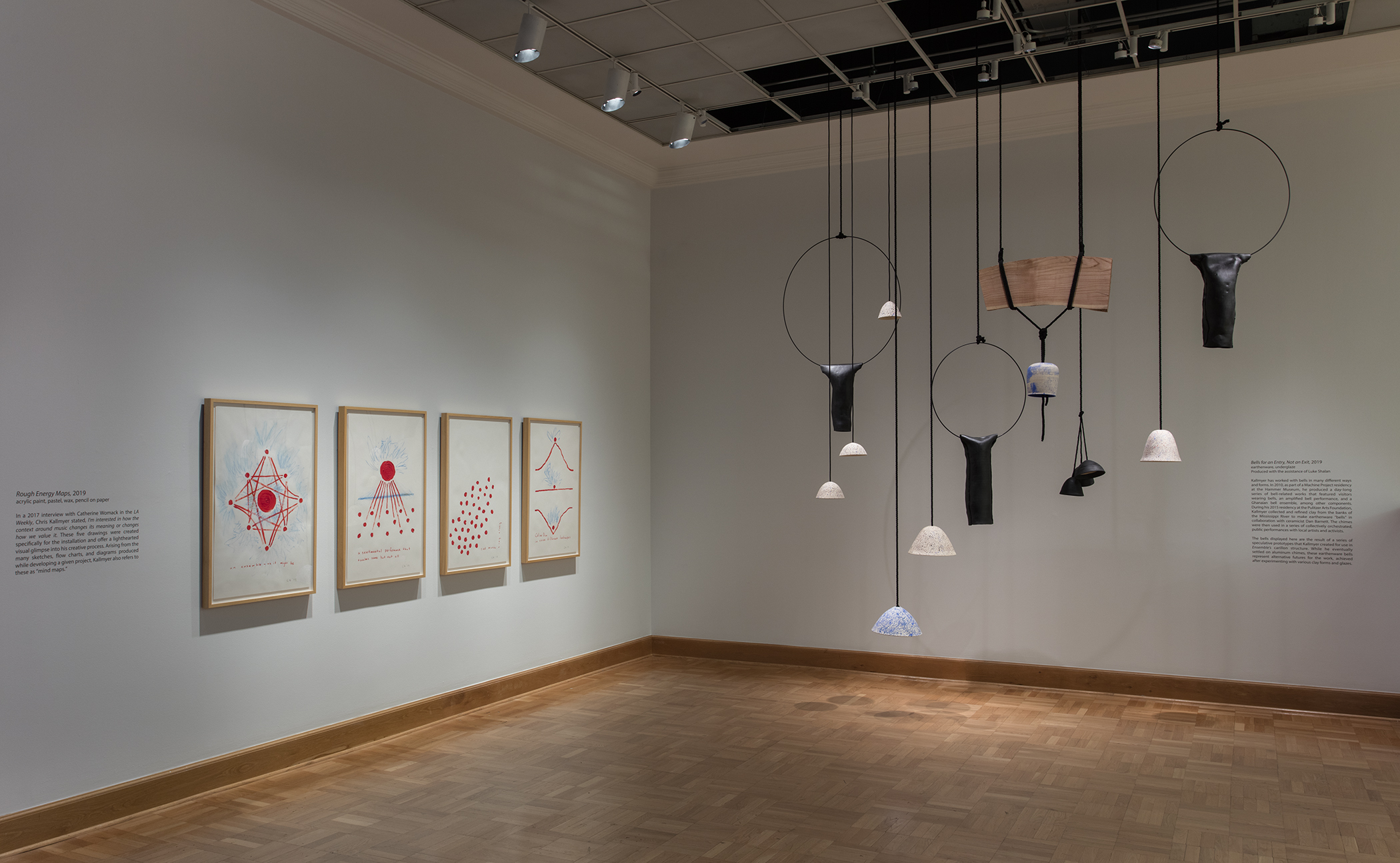Chris Kallmyer ‘Ensemble’ at the Santa Barbara Museum of Art
Artist’s Carillon Installation Creates Music and Community

It’s not what most people expect to find in an art museum. Ensemble, the new installation at the Santa Barbara Museum of Art by Los Angeles–based contemporary artist Chris Kallmyer, is a large carillon — a fixed set of chromatically tuned bells — made of raw lumber and bearing eight tuned bells that can be rung by pulling lines evenly spaced around the structure. The piece occupies the museum’s Preston Morton Gallery and is surrounded by related drawings, musical scores, and a video projection that documents the inaugural staging of the communal instrument. From now through September 15, the museum invites visitors to come interact with the instrument and one another through ringing the bells and through meditation and listening. Ensemble represents an emerging category of contemporary art practice that seeks to elaborate on ideas from the Fluxus movement, and, in the case of Chris Kallmyer, from the American heritage of so-called “free jazz.”
There will be regularly scheduled drop-in workshops on Thursdays throughout the run of the show, and on selected Saturdays, such as Saturday, June 1, there will be guided meditations as well. I recently spoke with Kallmyer about his ambitions for the work as preparations for the show’s opening were finishing up. The following is an edited version of our conversation.

I see that you have many designs covering the walls around the instrument. Are these scores for playing it? Yes, it’s an eight-bell instrument, and each score is an eight-bell phrase. I’ve written one for every day of the year. [Points to one labeled May 18.] This is the score and melody for today, and so, in a couple of hours, me and a group of musicians and nonmusicians will come together and play that composition. You see that the score is made up of colorful shapes and that each shape is coordinated with one of the eight bells. I’ve written 365 different melodies, many of which commemorate different people, from Jerry Garcia to Carolee Schneemann.
What level of musicianship will people need to participate? This kind of structure can work with experts, and it can work with tourists who don’t play music regularly and don’t even know each other. Part of the point is to have something that untrained strangers can come together and experience as a collaborative group. We open the work tonight, but it’s by no means static over the next four months.
What was the motivation to create Ensemble? I feel like it’s a good moment to wrestle with the power structures of music. Traditionally, the performers have all the power, but here I’m giving it over to the listeners as participants.

I understand that you studied with Wadada Leo Smith, and that you have been influenced by him and by African-American experimental music more generally. How did that happen? When they began making their true-to-form music, those artists [e.g., Anthony Braxton, George Lewis, the Art Ensemble of Chicago — ed.] were interested in how that music would fit into their culture, and into their personal narratives. What I saw happening in that work was something that I felt was missing from a lot of the classical music that I was playing at the time. That led me to create these kind of intermedia works — to take music out of the concert hall and into other places. In 2010, I was part of a group in Los Angeles called Machine Projects, and we put on some concerts of experimental music in the coatroom at the Hammer Museum, just to see what hearing that music in such an intimate setting would be like. As part of the same impulse, we ended up playing trombones and car horns on a mountaintop.
4•1•1 | Ensemble will be at the Santa Barbara Museum of Art through September 15. See sbma.net.




You must be logged in to post a comment.